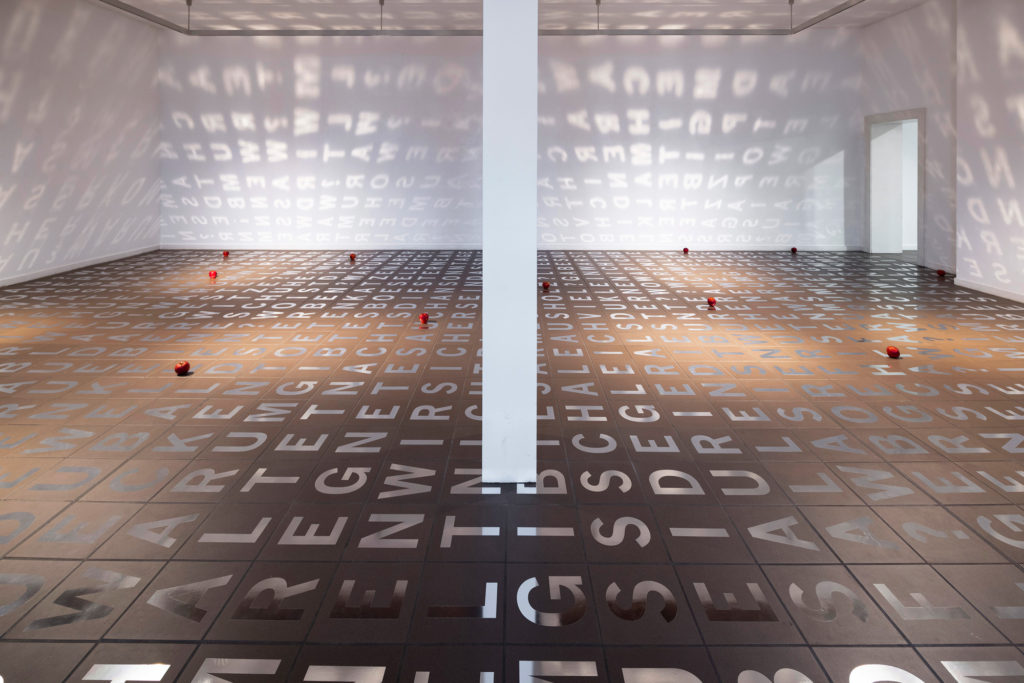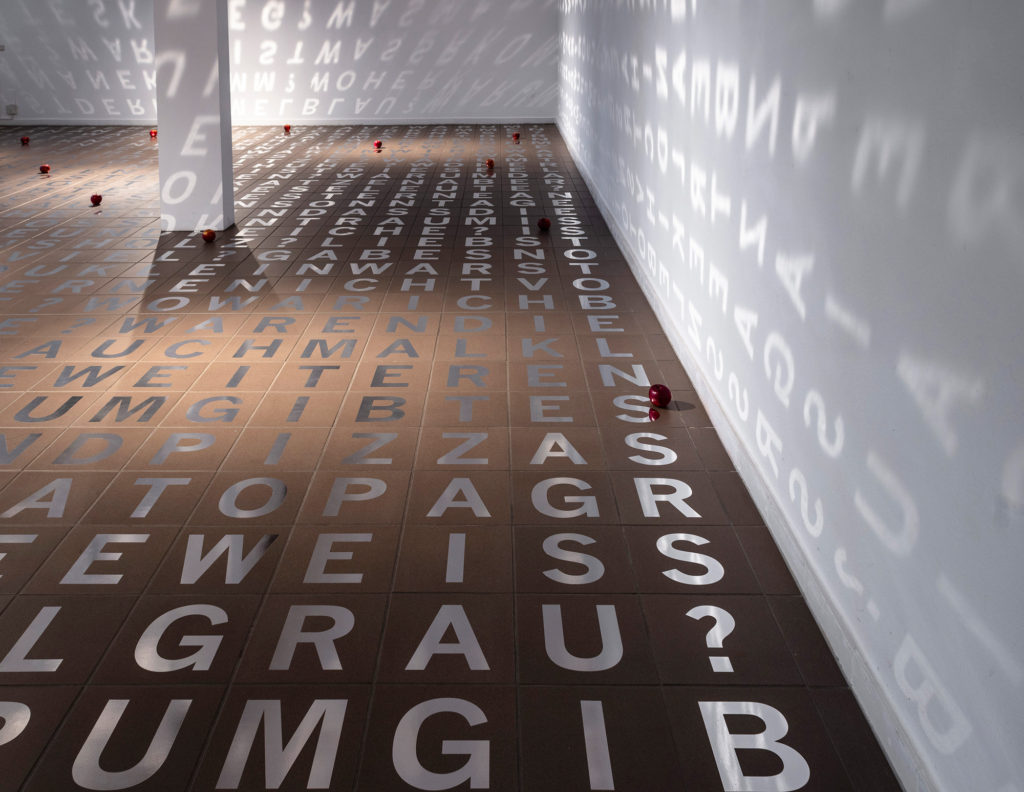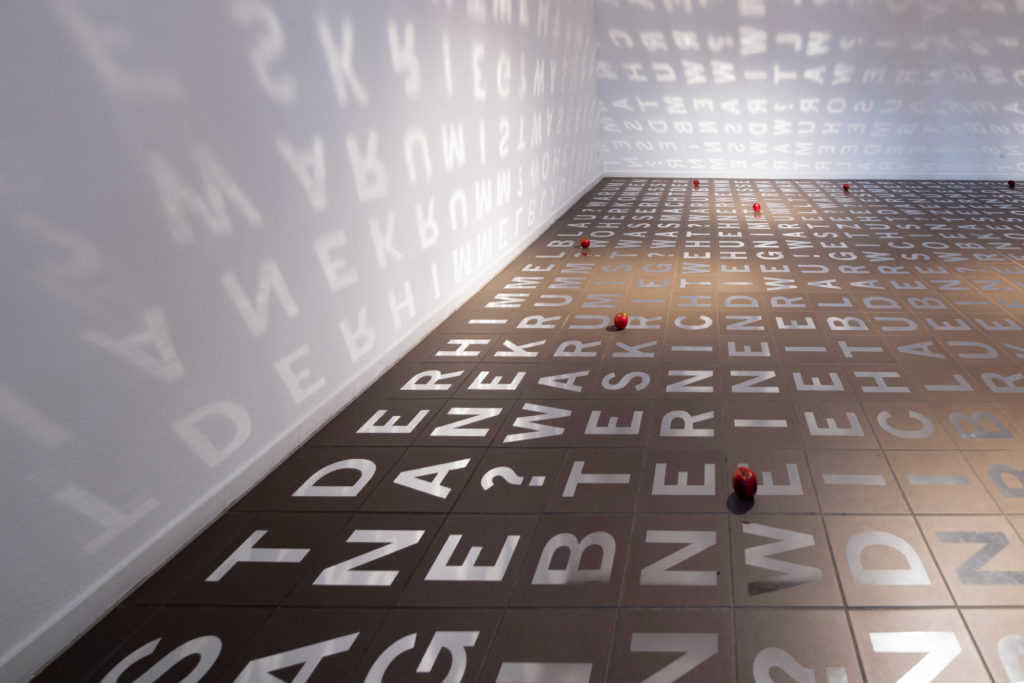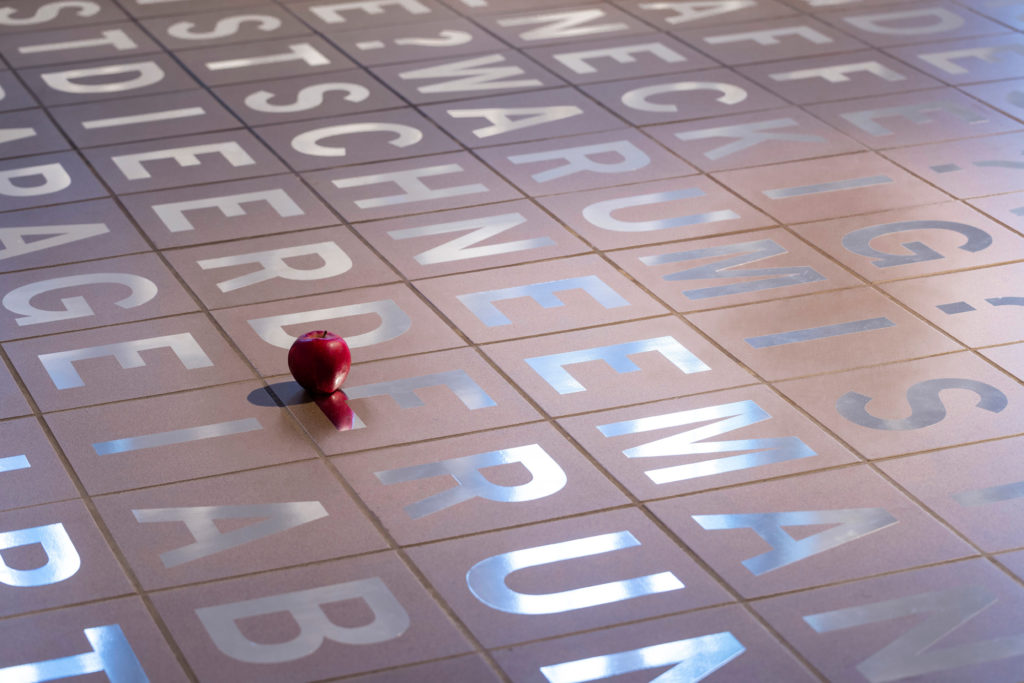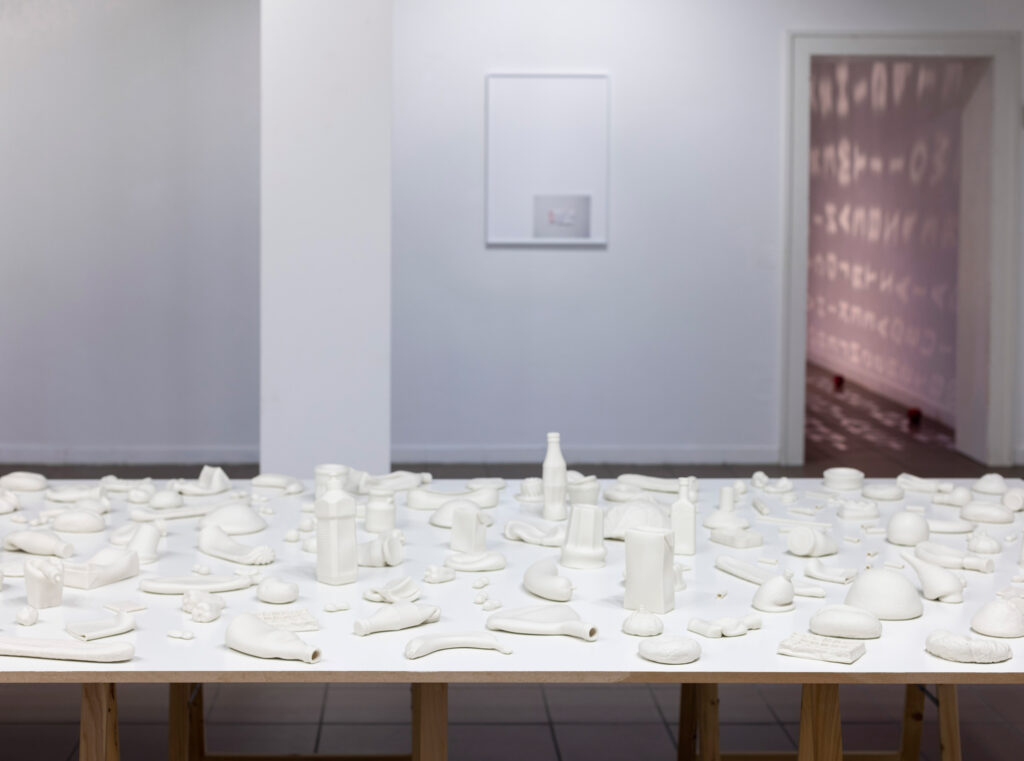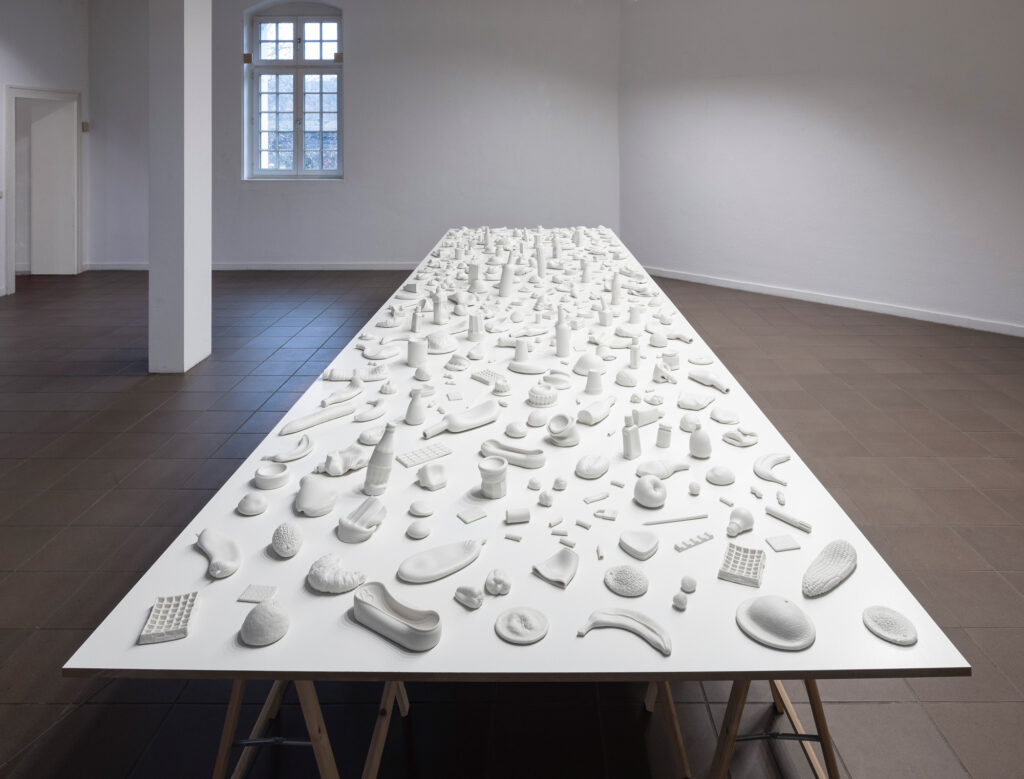Resonances of DiStances
|
»Resonances of DiStances« Countless reflective letters are stuck on tiles one by one, and apples are scattered across the floor. It is difficult to read them all at once because each letter is large and there are no periods, commas, or spaces between letters, such as “WARUMTRAGENKATZENKEINESCHUHE?”, namely, why don’t cats wear shoes? These questions were collected from discussion forums or social media, where parents frequently post to seek advice on how to respond to their children’s curiosities. Unlike “Question Projections” (1981-2003) by Fischli & Weiss, where questions are projected on the wall and make viewers wonder what kind of eccentric person would ask such ridiculous but philosophical things, those of Hirose & Nagatani transport viewers back to their own childhood memories and make them wonder who they are and where they stand now. “Still Life” (2013-) is another ongoing installation that consists of numerous different white porcelains representing everyday objects such as light bulbs, pencils, biscuits, Coca-Cola bottles, Ikea glasses, peanuts, bananas, apples, and so on. Porcelain is a hard and fragile material. Hirose and Nagatani, on the other hand, make it appear soft and limp. This leads to the question of why we can recognize it as an apple, for example, when we see the object, despite the fact that the shape is distorted and it is made of porcelain. Another question might be: What distinguishes these porcelain apples from the ones scattered across the floor as a part of the installation “Why don’t cats wear shoes?” (2019-)? By walking around the body of work by Hirose and Nagatani and physically engaging with them, their playfulness transforms into critical gazes on everyday life. They question divergences between vision and perception, blurring boundaries between art and everyday objects, which in the end leads to the simple and profound question, “Who are we?” As viewers, we take on additional roles as pivots, catalysts, and protagonists, reflecting ourselves in the works and activating the Leverkusen Kunstverein as a temporary space for contemplation. Nana Hirose and Kazuma Nagatani studied art in Kyoto and in Bremen. They are invited to many residency programs in Germany and Japan and currently live and work in Düsseldorf. They are interested in blurring invisible boundaries between daily life and art in the contemporary context. This text is excerpted from “The Treachery of Imagination” by Mariko Mikami, which is dedicated to the exhibition “Resonances of DiStances Vol.5 Nana Hirose & Kazuma Nagatani” at Kunstverein Leverkusen. Text by boa-basedonart, Düsseldorf Exhibitions: »Resonances of DiStances« Unzählige reflektierende Buchstaben sind einer nach dem anderen auf die Fliesen geklebt und Äpfel sind auf dem Boden verstreut. Es ist schwierig, sie alle auf einmal zu lesen, weil jeder Buchstabe groß ist und es keine Punkte, Kommas oder Leerzeichen zwischen den Buchstaben gibt, wie zum Beispiel WARUMTRAGENKATZENKEINESCHUHE? Diese Fragen wurden in Diskussionsforen oder sozialen Medien gesammelt, in denen Eltern häufig nach Ratschlägen suchen, wie sie auf die Neugierde ihrer Kinder reagieren können. Im Gegensatz zu den „Fragenprojektion“ (1981-2003) von Fischli & Weiss, bei denen die Fragen an die Wand projiziert werden und den Betrachter dazu bringen, sich zu fragen, was für eine exzentrische Person solch lächerliche, aber philosophische Fragen stellen würde, versetzen die Fragen von Hirose & Nagatani die Betrachter in ihre eigenen Kindheitserinnerungen zurück und lassen sie sich fragen, wer sie sind und wo sie jetzt stehen. „Still Life“ (2013-) ist eine weitere fortlaufende Installation, die aus zahlreichen verschiedenen weißen Porzellanen besteht, die Alltagsgegenstände wie Glühbirnen, Bleistifte, Kekse, Coca-Cola-Flaschen, Ikea-Gläser, Erdnüsse, Bananen, Äpfel und so weiter darstellen. Porzellan ist ein hartes und zerbrechliches Material. Hirose und Nagatani hingegen lassen es weich und schlaff erscheinen. Daraus ergibt sich die Frage, warum wir das Objekt beispielsweise als Apfel erkennen können, wenn wir es sehen, obwohl die Form verzerrt ist und es aus Porzellan besteht. Eine andere Frage könnte lauten: Was unterscheidet diese Porzellanäpfel von den Äpfeln, die als Teil der Installation „Why don’t cats wear shoes?“ (2019-)? Wenn man um die Arbeiten von Hirose und Nagatani herumgeht und sich körperlich mit ihnen auseinandersetzt, verwandelt sich ihre Verspieltheit in einen kritischen Blick auf den Alltag. Sie hinterfragen die Divergenzen zwischen Vision und Wahrnehmung und verwischen die Grenzen zwischen Kunst und Alltagsgegenständen, was letztlich zu der einfachen und tiefgründigen Frage führt, wer wir sind. Wir als Betrachter erhalten Rollen als Dreh- und Angelpunkt, Katalysator und Protagonist, spiegeln uns selbst in den Werken und aktivieren den Leverkusener Kunstverein als temporären Raum der Kontemplation. Dieser Text ist ein Auszug aus „Der Verrat der Vorstellung“ von Mariko Mikami, der der Ausstellung „Resonances of DiStances Vol.5, Nana Hirose & Kazuma Nagatani“ im Kunstverein Leverkusen gewidmet ist. Text by boa-basedonart, Düsseldorf Exhibitions:
|
